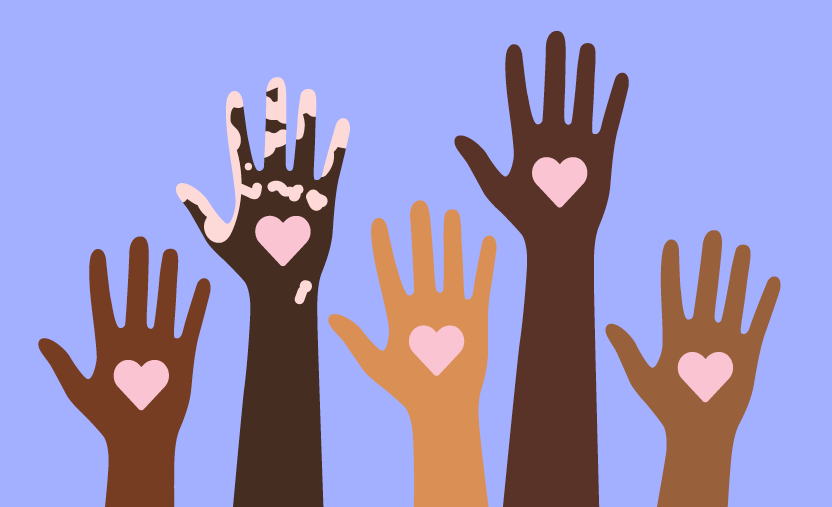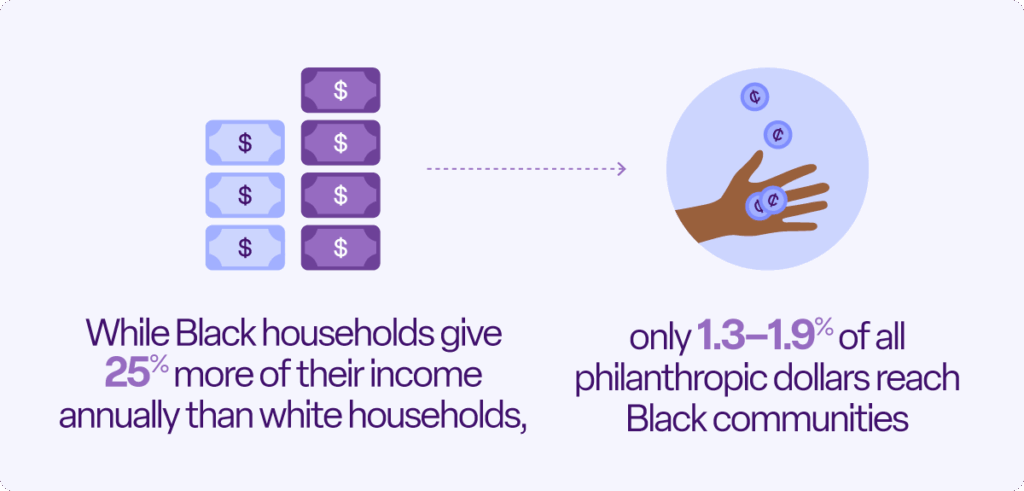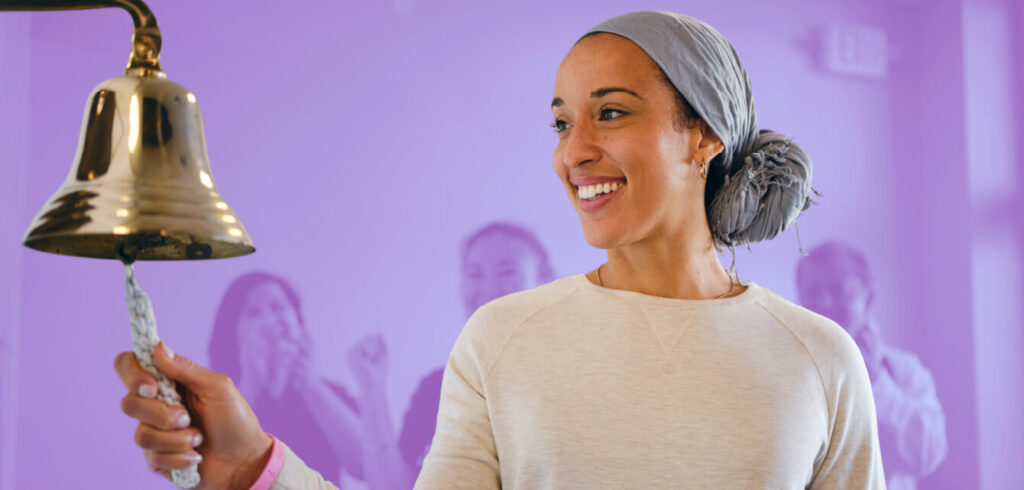Measuring to move toward equity
By Dionn Schaffner, Chief Diversity and Social Impact Officer, and Ben Miller, SVP of Data Science at Bonterra

At Bonterra, we believe that philanthropy should be both inclusive and effective — and that those two goals are deeply connected. That’s why we’re proud to support Black Philanthropy Month (BPM) for another year — amplifying the voices, visions, and leadership of Black-led nonprofits.
This annual celebration isn’t just about highlighting generosity in Black communities — it’s about confronting a stark reality: Black leaders remain significantly underrepresented in the nonprofit sector. And as any good data scientist (or DEIB strategist) will tell you: if you don’t measure it, you can’t change it.
Black Philanthropy Month is about inclusion by design. It’s a deliberate opportunity to elevate and support Black-led organizations that are doing exceptional work across every issue area — education, health, housing, justice, and more. These nonprofits have always been at the heart of their communities, and this moment helps ensure they’re also at the center of funding conversations.
August, typically a quiet month in giving, becomes a stage for visibility and momentum. Much like GivingTuesday, Black Philanthropy Month gives funders and donors a timely reason to engage — and we’re already seeing measurable results. At Bonterra, we have seen Black-led organizations increase the number of donations by 52% from 2023 to 2024 in just the second year of Black Philanthropy Month. Heightened awareness is translating into increased support, helping Black-led organizations build the stability and sustainability needed to keep doing what they do best: delivering impact.
The data behind the disparity
Black Americans make up about 14% of the U.S. population, and hold 8–15% of nonprofit CEO roles and only about 7–9% of board seats — a clear signal of systemic barriers to leadership, funding, and influence in the very sector tasked with driving social good. And the inequities don’t stop there: while Black households give 25% more of their income annually than white households, only 1.3–1.9% of all philanthropic dollars reach Black communities — a mismatch we cannot ignore.

This disparity also shows up in education. Historically Black Colleges and Universities (HBCUs) produce nearly 20% of all Black college graduates, yet they continue to face chronic underfunding compared to predominantly white institutions. At Stillman College, an HBCU in Tuscaloosa, Alabama, a recent “30-Days of Giving” campaign invited students — including athletes, choir members, and band members — to each reach out to 20 supporters. Using Bonterra Donor Drive, a peer-to-peer fundraising tool, the campaign matched the college’s best-ever results in both donations and donor participation, demonstrating how intentional partnerships and accessible technology can help strengthen resources for Black-serving institutions.
Recent shifts in federal funding, including cuts to social programs and increased competition for grants, have placed added strain on Black-led and marginalized nonprofits, widening existing disparities in resources and community support.
When we shine a light on this inequity, three important things happen:
- Awareness grows. People, funders, and institutions begin to see the depth of the leadership gap — and the potential lost when Black leaders aren’t equitably represented.
- The problem becomes undeniable. Data strips away the guesswork. It reveals both the magnitude of the challenge and the urgency of closing the gap.
- Investment becomes intentional. When donors and funders can see where the gaps are and where the opportunities lie, they can move from awareness to action. Measurement helps illuminate not just the disparity, but the organizations best positioned to address it. And when that insight drives funding decisions, Black-led nonprofits gain more than support: they gain predictability, resilience, and the runway to grow.
Why we measure
Measuring creates a roadmap for action. At Bonterra, we’re embedding measurement into our approach to social impact and DEIB because what gets measured gets moved:
- We track representation and funding flows to uncover gaps.
- We work with our nonprofit partners to analyze how equitable their own programs are.
- We highlight and celebrate Black-led organizations so that they’re visible to funders, partners, and peers.
Measurement turns abstract commitments into tangible progress. It’s how we hold ourselves — and the sector — accountable.
Spotlight on leadership
We also celebrate the philanthropists and community leaders changing the game. From Robert F. Smith, who erased the student loan debt of an entire graduating class at Morehouse College, to grassroots founders building nonprofits with minimal resources, the story of Black philanthropy is one of impact despite inequity.
These leaders prove that vision, talent, and commitment are abundant — it’s the access to resources that’s scarce.
But this isn’t only about solving inequity. Nonprofits serve as society’s safety net, stepping in where public systems fall short, especially for the most underserved. If the leadership of these organizations doesn’t reflect the diversity of the communities they serve, we limit our collective ability to meet real needs. Representation at the top isn’t just a matter of fairness — it’s essential to ensure that all communities are seen, heard, and supported with solutions that are rooted in lived experience.
A call to action
As we mark Black Philanthropy Month, here’s what we’re asking of our peers, partners, and the philanthropic community:
Fund Black-led organizations with intention. Move beyond one-time grants — commit to multi-year, unrestricted funding that allows leaders to plan and grow.
Measure and share your data. Track who leads your grantees, where your dollars go, and the demographics of who benefits from your work.
Tell the stories. Amplify Black-led nonprofits and the communities they serve — not just in August, but all year long.
Moving forward
Black Philanthropy Month is both a celebration and a challenge. The celebration is easy to see in the generosity and innovation of Black givers and leaders. The challenge is harder: facing the inequities in representation and funding head-on — and doing the work to close the gap.
At Bonterra, we’ll keep measuring, keep shining a light, and keep moving — because equity doesn’t happen by accident. It happens by design.
Work with Bonterra



